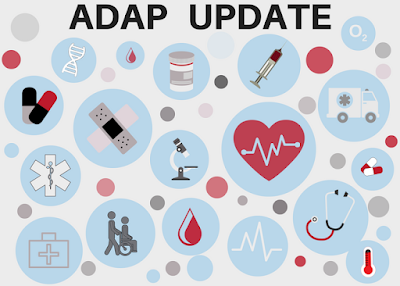By: Ranier Simons, ADAP Blog Guest Contributor
This is my last blog post of 2022. It is hard to believe that a year has already passed. It does not feel like I have been a guest blog contributor for an entire year. When I was blessed with the opportunity to contribute, I was unsure of what to expect. As every writer knows, the end product is always the result of creating something from nothing. In the case of this blog, the ‘something’ is not some fanciful creative writing artistic endeavor. The ‘something’ is meant to educate, reveal, inspire action, promote, support, highlight, battle misinformation and in some cases disinformation. Writing for this blog is acceptance of the responsibility to make sure every blog is properly researched, has a purposeful message, and most importantly respects and does not waste the time of those who take the time to read it.
 |
| Photo Source: JerryJenkins.com |
I have a master’s degree in healthcare innovation, many years of science and medical education and research experience, firsthand experience as a healthcare worker, life experience as a caregiver, and I am currently a clinical operations healthcare data analyst. However, those things are not why I felt equipped to write for this blog. I felt confident to effectively contribute because I knew I was willing to dig into the jargon-filled weeds of medical journals and other scientific periodicals, scour digital sites of evidence-based discourse, and seek insight from experts in order to distill information into a format easily accessible to all. Communication goes both ways. Real communication happens when information is delivered and the recipients truly comprehend and digest what is given. Medical discourse regarding HIV/AIDS and other related healthcare issues is vast. This makes distillation very important.
My path has crossed with many people living with HIV/AIDS, some of whom have passed due to HIV/AIDS. I have been very close to a good number of them and tangentially exposed to others. Even though I have a high level of exposure to the HIV/AIDS landscape, I was not fully aware of all of the layers before this year of contributing to his blog. I learned about a few HIV/AIDS concepts and related disease etiologies of which I was not previously aware. Researching some of the posts resulted in my discovery of resources I didn’t know about. Most importantly, writing for this blog revealed to me the vastness of the global network of people working towards the eradication of HIV/AIDS on many different levels.
 |
| Photo Source: African Constituency |
The most important thing I’ve gleaned as a guest blog contributor is how far we have left to go in the fight against HIV/AIDS. Because medical science has advanced to the point of treating it like a chronic disease, on the surface it seems as if the general public doesn’t view it with the same sense of urgency or danger as in the past. However, there is so much more work to be done, so many more people to reach, so many more policies to write and change, so much more research to be done, many more breakthroughs to discover, and multitudes of lives to save.
Disclaimer: Guest blogs do not necessarily reflect the views of the ADAP Advocacy Association, but rather they provide a neutral platform whereby the author serves to promote open, honest discussion about public health-related issues and updates.

.jpg)


